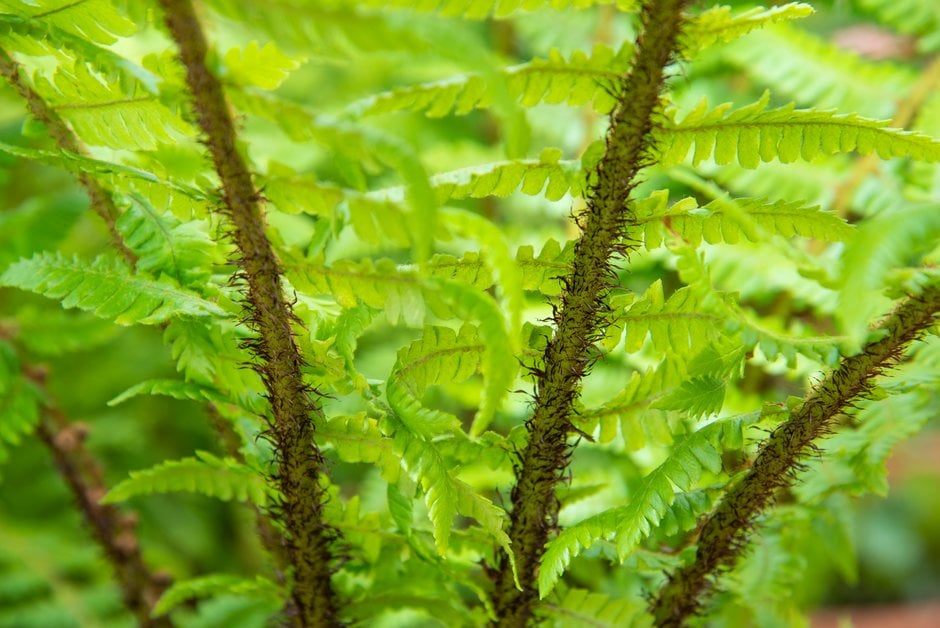Dryopteris crassirhizoma
thick-stemmed wood fern
A semi-evergreen fern to 1m tall and wide with a thick, brown crown from which upright to slightly arching fronds arise to form a vase-shaped clump; each frond is divided into narrowly lance-shaped and lobed pinnae
Size
Ultimate height
0.5–1 metresTime to ultimate height
5–10 yearsUltimate spread
0.5–1 metresGrowing conditions
Moisture
Moist but well–drained, Poorly–drainedpH
Acid, Alkaline, NeutralColour & scent
| Stem | Flower | Foliage | Fruit | |
| Spring | Brown Green | |||
|---|---|---|---|---|
| Summer | Green | |||
| Autumn | Green | |||
| Winter | Green |
Position
- Full shade
- Partial shade
Aspect
North–facing or West–facing or East–facing or South–facing
Exposure
Exposed or Sheltered Hardiness
H6Botanical details
- Family
- Dryopteridaceae
- Native to GB / Ireland
- No
- Foliage
- Semi evergreen
- Habit
- Bushy
- Genus
Dryopteris can be deciduous, semi-evergreen or evergreen ferns, with stout, erect or decumbent rhizomes and shuttlecock-like rosettes of lance-shaped to ovate, pinnately divided fronds
- Name status
Correct
- Plant range
- Japan Korea
How to grow
Cultivation
Easy to grow in most cool, moist, lightly-shaded sites but will grow in full sun if given plenty of moisture. Tolerant of dry shade but water regularly in their first season and mulch well. See how to grow ferns for further advice
Propagation
Propagate by division in spring
Suggested planting locations and garden types
- City and courtyard gardens
- Architectural
- Cottage and informal garden
- Underplanting of roses and shrubs
- Flower borders and beds
Pruning
Dead or damaged fronds may be removed as necessary
Pests
Generally pest-free
Diseases
Generally disease-free
Get involved
The Royal Horticultural Society is the UK’s leading gardening charity. We aim to enrich everyone’s life through plants, and make the UK a greener and more beautiful place.
